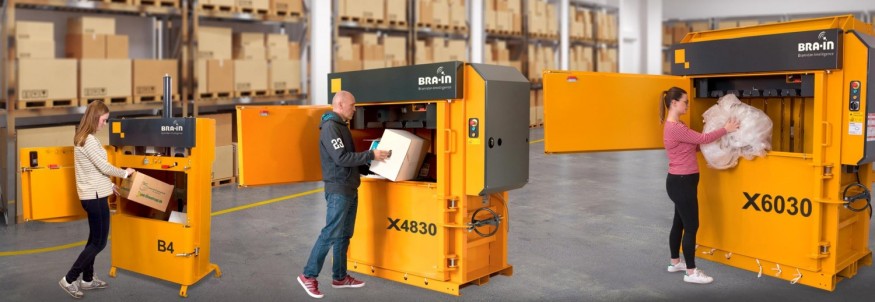
A vertical baler, which is also referred to as a vertical press, is a piece of recycling equipment that is used to compress large quantities of recyclable materials, such as cardboard, paper, and plastic, into dense, bale-shaped packages that are simple to handle and keep organized. These vertical balers are also referred to as vertical presses. These balers are frequently utilized in industrial, commercial, and municipal contexts for trash management and to enhance recycling efforts.
A Vertical baler is a machine that employs a hydraulic ram to accomplish the compression of the material in a vertical configuration. Following the compression of the materials, a steel wire or a plastic strap is used to form a package that is condensed and simple to manipulate. Because of the way they are designed, they take up less room, which makes them an excellent choice for companies that are short on space.
What Are The Different Types Of Vertical Balers Available In The Market
In today's market, there is a diverse selection of vertical balers, each of which comes with a distinct set of characteristics and a particular set of features. The following are some of the most often encountered types:
1. Manually operated vertical balers: They require the material to be fed in by hand and the bale to be compressed by hand as well. They are frequently utilized in recycling operations that are on a smaller scale or in settings where access to energy is limited. They are a financially feasible alternative for smaller companies, and they can be utilized in off-the-grid settings where access to energy is limited.
2. Semi- Automatic vertical balers: These balers still use a conveyor belt to deliver the materials into the baling chamber, but the materials have to be fed into them manually. They are typically put to use in recycling facilities that are on the smaller side and process a lower amount of materials. They provide a more cost-effective alternative for less extensive businesses that nonetheless require a high degree of productivity.
3. Automatic Vertical Balers: They are balers that automatically feed materials into the baling chamber using a conveyor belt. Significant recycling facilities, which must process a large number of recyclables promptly and effectively, are common places to find them in use. They might be able to process a huge volume of material all at once, which would improve productivity and cut down on the amount of labor needed.
Essential Components Of A Vertical Baler
The feed hopper, the compactor unit, the baling chamber, and the baling press are the essential elements that constitute a vertical baler. The recycler's recyclable materials are put into the baler through the feed hopper. The materials are first compacted by the compaction machine, and then they are transported into the baling chamber, where they are shaped into a bale. The apparatus that compresses the materials and shapes them into a bale is called a baling press.
Advantages Of Using A Vertical Baler
The fact that vertical balers take up less space than horizontal balers is one of the most significant advantages they offer. Vertical balers, in contrast to horizontal balers, require significantly less floor area to operate, making them an excellent choice for companies that operate in cramped spaces. This can be especially helpful for smaller firms, retail operations, and other organizations that have little room to work with.
Vertical balers are also simple in both their operation and maintenance requirements. They often include user interfaces that are straightforward and don't require a great deal of specialist knowledge to operate. Because they have fewer moving parts, they require less maintenance and have a longer lifespan than other forms of recycling equipment. In addition, they have fewer moving components than other types of recycling equipment. This may reduce the amount of money spent on labor as well as the amount of time lost due to maintenance.
Benefits Of Using A Vertical Baler
Vertical balers are advantageous for several reasons, one of which is their capacity to improve the density of recyclable materials. This can help to reduce the amount of space that is necessary to keep the materials, as well as the number of trips that are required to transfer the materials to a recycling facility. Because of this, efficiency might increase while expenses can decrease.
Vertical balers have the potential to provide considerable environmental benefits, one of which is the reduction of the amount of waste that is disposed of in landfills. Compressing materials into dense bales results in a reduction in the amount of space required to store and transport the materials. This, in turn, can help to reduce the number of trips that are necessary to carry the materials to a recycling facility. This may aid in the reduction of carbon emissions and other pollutants that are related to the transportation of waste. Additionally, compressed materials can make a major contribution to both the preservation of the environment and the safety of the workplace.
© 2025 ScienceTimes.com All rights reserved. Do not reproduce without permission. The window to the world of Science Times.












